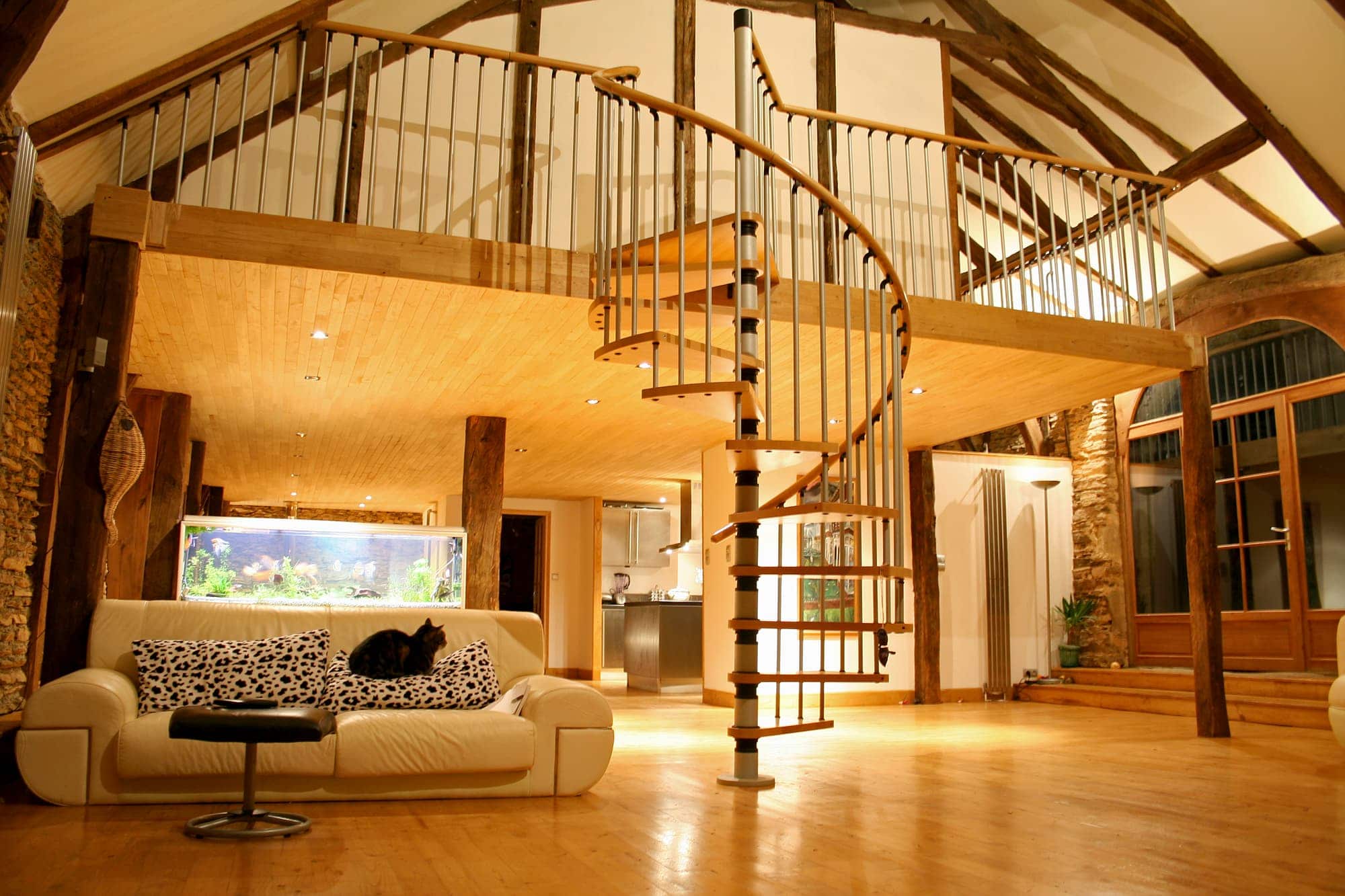Barndominiums are a growing residential trend. A barndominium is a large, open-concept structure that resembles a traditional barn, with special design characteristics that tailor it to everyday living.
Barndominiums offer a wide range of benefits, from energy efficiency and easy maintenance to quick construction time and a low building cost compared to other residential property types.
Traditional homes are not for everyone’s budget and taste. When considering a custom barn-inspired home and the alternative barndominium life, you need education and guidance on barndominium prices, the building process, and the pros and cons of barndominiums.
In this comprehensive cost guide, we investigate these details and more. Come with us as we explore every aspect of barndominium pricing and design.
What Is a Barndominium?
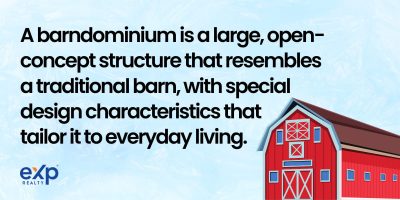
A barndominium is a hybrid building that combines the features of a traditional barn with those of a modern residential home. It provides an energy and cost-efficient living space within a metal structure on a concrete foundation.
Barndominiums are popular from both practical and aesthetic perspectives. Their affordability and flexibility make them desirable in today’s expensive and limited housing market.
Some of the design features include the dramatic ceiling heights, vast open floor plans, and large barn doors you typically see with traditional barns. Barndominium homes are like rustic versions of warehouse conversion living spaces.
A barndominium house can also contain spaces delegated for attached garages, workshops, and more. Barndominium structures are perfect for regions that experience harsh and frigid weather. They are also a much more affordable home option than traditional houses.
Benefits of Barndominiums
Here is a complete breakdown of the many advantages of barndominium homes.
Flexible
Aside from a primary residence, a barndominium can serve as a rental property, vacation home, studio, guest house, workshop, or office space. Since it is essentially just a large, open building, the possibilities for its use are endless.
Many build a barndominium home to designate a portion of the floor plan for extra use. Owning a multi-use space that can give you living quarters and additional work or storage space is economical.
Barndominium flexibility extends beyond utility. These structures offer extensive customization options that allow the building owner to choose stylistic design components that reflect their taste.
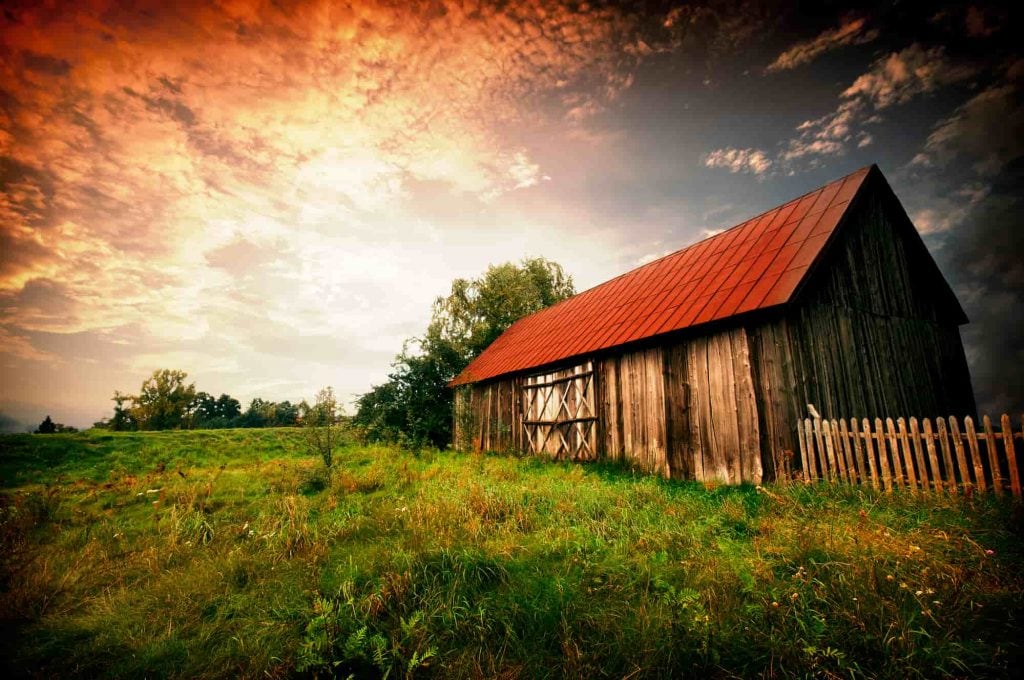
Additional features, like a wraparound porch, custom doors, and beams throughout the vaulted ceilings, can elevate and personalize the aesthetic of barndominiums even further.
Unlike traditional homes, homeowners can expand a barndominium from a modular kit much more quickly, cheaply, and easily because there is no need for extensive architectural planning, demolition, or renovation.
A homeowner can start by building a smaller structure quickly and add on to it in the future if they choose to.
Durable
A barndominium can be durable due to its solid construction and use of high-quality materials, such as steel framing and metal roofing, which are resistant to rot, pests, and extreme weather conditions.
Let’s start with the foundation. Traditional homes use foundations with crawl spaces. A barndominium stands on top of a concrete slab. This supports the structure’s durability in cold climates by eliminating the possibility of freezing and bursting pipes.
The most common material for barndominium walls and roofs is steel. A steel barndominium can withstand strong weather because metal protects against extreme winds, hail, and natural disasters like tornadoes.
Modern materials like metal siding and framing protect against a variety of weather conditions, making a barndominium house optimal for a primary residence or an emergency shelter.
A regular house is typically made from wood, which attracts and harbors moisture that can lead to mold, termites, and warping that impacts the structural integrity. Steel construction offers high durability in comparison.
Low Maintenance
Maintenance costs are much lower with a metal barndominium than traditional houses for most of the reasons we explained. Damage from the burst pipes, storms, rot, and pests that a barndominium house protects against are expensive to remedy.
The high durability level of steel construction means not having to replace big-ticket items like siding and roof materials the way a traditional house calls for over the years. General upkeep is less, too. Wooden siding requires painting or staining that homeowners do not have to worry about with metal siding.
Low Building Cost
A barndominium house can have a lower building cost than a traditional house due to simpler construction methods and less expensive materials.
The open concept design that barndominium floor plans provide is cost-effective because it requires fewer materials and the spaces are multi-use which lowers the final square footage amount.
We explore the cost breakdown more later, but the general ballpark that professional contractors give is $30-$150 per square foot to build a barndominium house versus $100-$200 per square foot to build a traditional house.
Also, crawl space foundations that most commonly support traditional houses cost around $5,000-$10,000 more upfront than using the concrete foundation a barndominium home calls for.
Energy-Efficient
A barndominium can be energy efficient due to its design and use of energy-saving features, such as insulated walls and roofs, energy-efficient windows and doors, and energy-efficient heating and cooling systems, which can reduce energy consumption and lower utility costs.
Builders can use blanket insulation, loose-fill insulation, and rigid board insulation, but the most common type is spray foam. With spray foam insulation, the options are closed or open-cell. Closed-cell spray foam is preferable for a metal structure since it acts as a strong vapor barrier.
High-quality spray foam insulation in barndominiums keeps the interior cooler in the summer and warmer in the winter. That saves on energy bills and reduces the homeowner’s carbon footprint.
Barndominiums also utilize oversized windows for the design aesthetic, supplying ample natural light and lowering a homeowner’s reliance on electrical lighting. This element contributes further to the lower cost and environmental impact of barndominium housing.
A homeowner can make decisions through the building process to enhance the energy efficiency of their barndominium. Orienting the structure to take advantage of solar exposure, installing lighting and appliances with high energy ratings, and utilizing alternative energy systems like solar panels can improve a barndominium’s energy efficiency.
Safe
A barndominium is less likely to suffer considerable water or fire damage and is safer than traditional homes. Many people build steel barns as emergency structures because of their high-safety design.
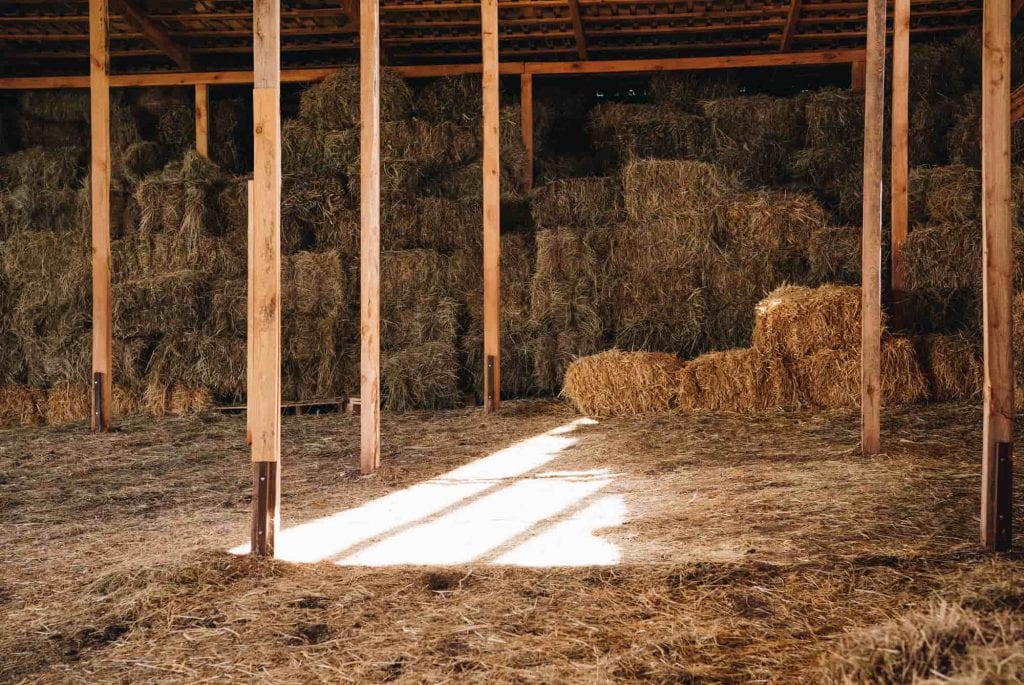
A barndominium’s solid construction and use of materials resistant to natural disasters and other external threats, such as steel framing and metal roofing, can withstand high winds, earthquakes, and other natural hazards.
A metal building does not easily catch fire as wooden structures do. Metal frames are not flammable, so ceilings and walls with steel beam support will stay standing and provide more escape time for occupants fleeing an active fire.
Quick To Build
A barndominium can be quick to build due to prefabricated materials and simpler construction methods, which can be assembled on-site more quickly and efficiently compared to traditional construction methods.
Barndominium builder kits with prefab construction are popular for their budget and timeline-friendliness. The structural components go through prefabrication and delivery to the building site. The materials just need assembly.
Considerations Before Building a Barndominium
Here is a look into the top considerations before progressing with a barndominium building project.
Access
It is critical to ensure adequate access before starting the building process to avoid delays and unexpected costs. Proper vehicular access can carry certain nuances.
For example, if someone intends to build on a plot of land and connect direct access to a highway, there are different zoning ordinances than if someone is planning to connect access to a shared driveway or unadopted road.
When considering the plot’s access, consider construction vehicles, unloading, and emergency vehicles. If there is no access to the building site, the homeowner must install one. Private asphalt roads can cost up to $170 per linear foot.
Utilities
Utilities should be considered when building a barndominium because they are essential for the functionality and comfort of the building, and their availability and cost can impact the feasibility and budget of the project.
If the plot does not have access to a county or city water source, the homeowner needs to properly install septic and water tanks for the structure. Electricity needs to connect to the property, too. The costs for connecting or supplying essential utilities vary depending on each plot and its location.
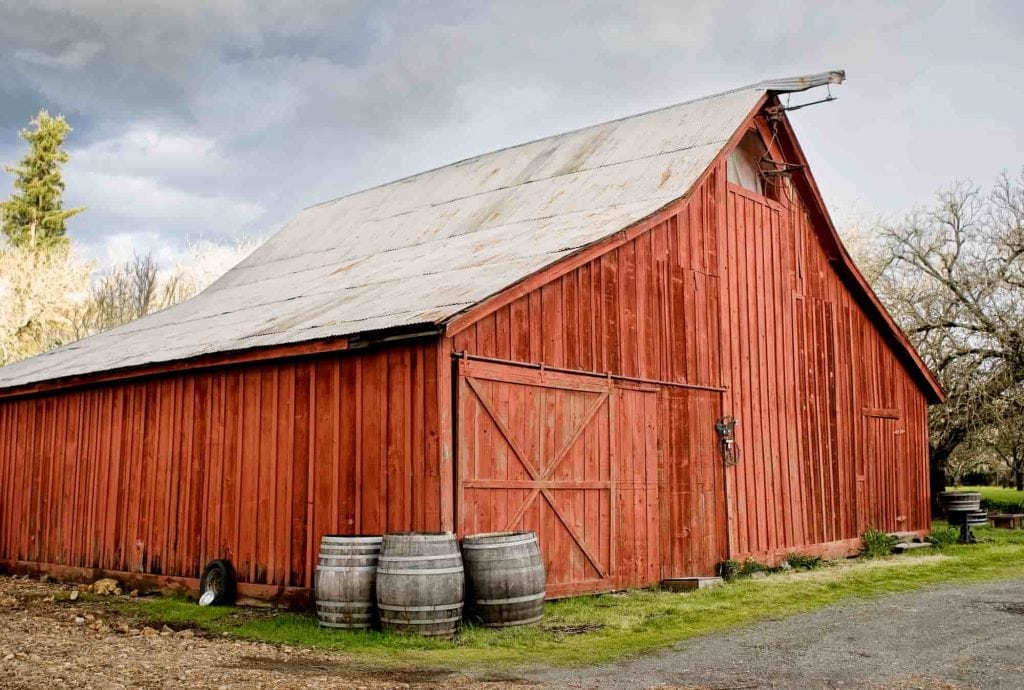
In addition to identifying which utilities a landowner has or needs to gain access to, the builder should clarify if any utility easements are active on the plot. A utility easement is a designated area free for utility workers to enter and perform maintenance on.
Utility easements also allow for future sidewalks, underground pipes, or power lines. Property deeds and county clerk offices can assist in locating any utility easements to avoid when building so that there are no conflicts.
Zoning and Permits
Zoning and permitting require close consideration when building a barndominium because they regulate the use and development of land in a specific area, and failure to comply with these regulations can result in fines, delays, and other consequences.
Building a barndominium home in a residential area that has already undergone development is usually difficult because most zoning laws do not allow for large metal structures. Homeowners have more luck securing permits for barndominium construction in rural or unincorporated areas.
Permitting agencies require site and architectural plans detailing floor, utility, and elevation plans. Steel barndominiums also require official engineer drawings. Companies that sell barndominium kits can provide those documents. Permits range in price depending on the county.
An additional septic permit might be necessary if the property does not connect to a municipal water source. Fees and regulations vary between state and county, so thorough research before purchasing a plot to build a barndominium home is crucial.
How Much Does a Barndominium Cost?
It isn’t easy to provide a price range for a barndominium, as the cost difference can vary depending on several factors, such as the size, location, materials, custom building features, and more.
Size and Location
The more square footage the structure has, the more expensive it is to build. Location impacts the cost because of variances in land prices, zoning fees, and distance to ship if using a prefab barndominium kit.
The FAQ section lists the most affordable US states in which to build barndominium homes.
Materials and Features
Interior and exterior materials and finishes can vary greatly in cost. Customizing and adding features increases the overall expense. Appliances, heating and cooling systems, windows and doors, porches or patios, custom garage doors, and other components impact the total building cost.
Choosing higher-end finishes will not be as budget-friendly as making more standard selections. The homeowner can make decisions and customizations throughout the process to tailor the build to budget and personal style.
Here are some interior features that affect the overall barndominium price:
- Countertops
- Flooring
- Light Fixtures
- Appliances
- Various heating and cooling systems have different costs, and some builders add extra features like in-floor heating
- Insulation types carry different prices depending on the style and how labor-intensive they are
It is always more affordable to go with prefab building kits and standard finishes than building from the ground up or going super custom. Here are some exterior features that impact the final price of a barndominium build:
- Land clearing or other landscaping to prepare the plot
- Digging a well and installing a septic and water tank versus being able to connect to a municipal water source.
- Roofing style affects the price because of the different shapes to choose from
Labor
A DIY barndominium costs less than hiring licensed contractors to manage and complete the build, but there could be unforeseen expenses that come with sacrificing professional work. Many counties require professional labor for elements like plumbing and electrical to be compliant with permits.
Barndominium Cost Estimation
There are a couple of methods for getting an accurate estimation for a barndominium build.
Online tools like cost calculators, can provide a ballpark estimate by inputting information like square footage and basic construction type. Consulting with a contractor or barndominium building company directly offers the most specific cost estimation.
Budgeting and Long-Term Expenses
When budgeting for a barndominium build, it is essential to include zoning and permit fees for the county where the build will occur on top of the materials and labor costs. Insurance, maintenance fees, and taxes also require consideration.
Homeowners building a new barndominium or renovating an existing barn structure into a residential property must plan for a contingency fund to cover unexpected expenses.
Conclusion
Building a barndominium house is an affordable and energy-efficient option for homeowners. Barndominiums are hybrid structures that offer flexible open floor plans, strong durability, and the popular barn aesthetic.
The cost to build a barndominium depends on various factors like location, size, materials, and custom features. Due diligence when researching where and how to complete construction is critical because different states and counties have varying regulations and fees.
If you like the idea of a unique and sustainable home that is more affordable than a traditional house, you should consider the barndominium lifestyle. Continue further research and seek professional advice to discover how a barndominium building could be the perfect housing option.
FAQ’s Barndominium Cost Guide
Here are some of the most frequently asked questions about building a barndominium house.
Where is the cheapest place to build a barndominium?
Most rural states with low living costs, like West Virginia, Alabama, Mississippi, Michigan, and Louisiana offer the country’s most minimal real estate and construction costs.
Can you build a barndominium for $200,000?
Yes, you can buy a barndominium DIY kit, or shell, for well below $200K and keep the cost underneath that price if you do most of the work yourself and maintain standard appliances and finishes. Remember that the plot of land carries its own cost.
How long will barndominiums last?
A metal barndominium can last well over a lifetime. If the structure has high-quality construction, steel framing, foundation, and upkeep the frame and exterior can last for hundreds of years. The barndominium’s interior components are what require the most maintenance and general upkeep over time.
Which is cheaper, a barndominium or a house?
Looking solely at the base price of construction, a barndominium is significantly cheaper to build than a traditional house. However, finishes, size, location, add-ons, customization, and amenities influence the final price. So, it depends.
How big of a barndominium can I build for $200K?
On the high end, barndominiums have an average cost of $150 per square foot. At that price, you can estimate a building of around 1,333 square feet for $200,000. That is the cost of doing it yourself. Hiring professionals adds an average of $15 per square foot, decreasing the square footage to about 1,212 paying for professional labor.
